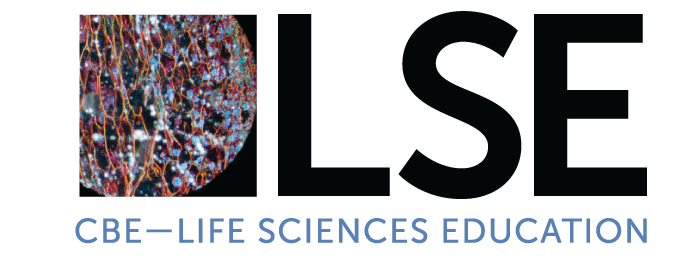Effective Construction
- A learning objective’s (LO’s) effectiveness is primarily determined by the clarity of its language and the extent to which it can be measured.
- Use the Revised Bloom’s taxonomy framework for categorizing LOs according to their cognitive complexity and thinking skills.
- An LO should specify what a student will be able to do due to instruction. Additional considerations, such as the conditions and acceptable performance criteria, may also be included.
Acceptable performance criteria can be established in the syllabus or other documents rather than within the objective.
 Mager, R.F. (1962). Preparing instructional objectives: a critical tool in the development of effective instruction (1st ed.). Fearon Publishers. The author discusses the purpose of LOs and gives guidelines to help instructors write effective LOs. The three components of LOs include performance, conditions, and criteria. The performance should be stated using an action verb and describe what students are expected to do. Conditions should communicate what tools students will or will not be able to use and the real-world situations in which their performance must occur. Criteria provide a standard for assessment that refers to the performance and describes a limit to the performance. The author stresses that LOs should not include the instructional methods planned for achieving the LOs. Instructors will find this a comprehensive, valuable resource for writing and improving clear and measurable LOs.
Mager, R.F. (1962). Preparing instructional objectives: a critical tool in the development of effective instruction (1st ed.). Fearon Publishers. The author discusses the purpose of LOs and gives guidelines to help instructors write effective LOs. The three components of LOs include performance, conditions, and criteria. The performance should be stated using an action verb and describe what students are expected to do. Conditions should communicate what tools students will or will not be able to use and the real-world situations in which their performance must occur. Criteria provide a standard for assessment that refers to the performance and describes a limit to the performance. The author stresses that LOs should not include the instructional methods planned for achieving the LOs. Instructors will find this a comprehensive, valuable resource for writing and improving clear and measurable LOs.
 Anderson, L.W., & Krathwohl, D.R. (2001). A taxonomy for learning, teaching, and assessing: A revision of Bloom’s taxonomy of educational objectives (Complete ed.). Longman. In this resource, the authors discuss learning behaviors that comprise the learning process. The cognitive domain is divided into six levels of increasing cognitive complexity. The verb selected in a learning objective is associated with the cognitive process dimension, and the object describes the knowledge dimension of the learning objective. This resource provides instructors with a revision of Bloom’s taxonomy that more-explicitly addresses instruction and learning tasks.
Anderson, L.W., & Krathwohl, D.R. (2001). A taxonomy for learning, teaching, and assessing: A revision of Bloom’s taxonomy of educational objectives (Complete ed.). Longman. In this resource, the authors discuss learning behaviors that comprise the learning process. The cognitive domain is divided into six levels of increasing cognitive complexity. The verb selected in a learning objective is associated with the cognitive process dimension, and the object describes the knowledge dimension of the learning objective. This resource provides instructors with a revision of Bloom’s taxonomy that more-explicitly addresses instruction and learning tasks.
 Spence, B. (2019). Using Bloom’s taxonomy matrix to reach higher-level learning objectives. Radiologic Technology, 90(6), 622-624. In this editorial, the author describes the process of using Bloom’s taxonomy matrix to help instructors write higher-level Bloom’s LOs. The framework can ensure that adequate focus is placed on providing instruction and assessment of LOs that require various thinking skills. Although its use is described in the context of radiologic science, the author offers instructors a practical, helpful matrix that can be implemented in any discipline.
Spence, B. (2019). Using Bloom’s taxonomy matrix to reach higher-level learning objectives. Radiologic Technology, 90(6), 622-624. In this editorial, the author describes the process of using Bloom’s taxonomy matrix to help instructors write higher-level Bloom’s LOs. The framework can ensure that adequate focus is placed on providing instruction and assessment of LOs that require various thinking skills. Although its use is described in the context of radiologic science, the author offers instructors a practical, helpful matrix that can be implemented in any discipline.
 Georgia Tech. (n.d.). Developing student learning outcome statements. Office of Academic Effectiveness. In this tool, the authors provide a tutorial on writing measurable LOs (using the term “outcomes”) using Bloom’s Taxonomy. They provide links to several LO generators and supply a checklist for evaluating LO statements.
Georgia Tech. (n.d.). Developing student learning outcome statements. Office of Academic Effectiveness. In this tool, the authors provide a tutorial on writing measurable LOs (using the term “outcomes”) using Bloom’s Taxonomy. They provide links to several LO generators and supply a checklist for evaluating LO statements.
 Shabatura, J. (2013, September 27). Using Bloom’s taxonomy to write effective learning objectives. Teaching Innovation and Pedagogical Support. In this teaching guide, the author explains how Bloom’s taxonomy can be used in course design. Examples are provided to demonstrate how action verbs that align with Bloom’s taxonomy can be used to create course-level and instructional (lesson-level) LOs.
Shabatura, J. (2013, September 27). Using Bloom’s taxonomy to write effective learning objectives. Teaching Innovation and Pedagogical Support. In this teaching guide, the author explains how Bloom’s taxonomy can be used in course design. Examples are provided to demonstrate how action verbs that align with Bloom’s taxonomy can be used to create course-level and instructional (lesson-level) LOs.









